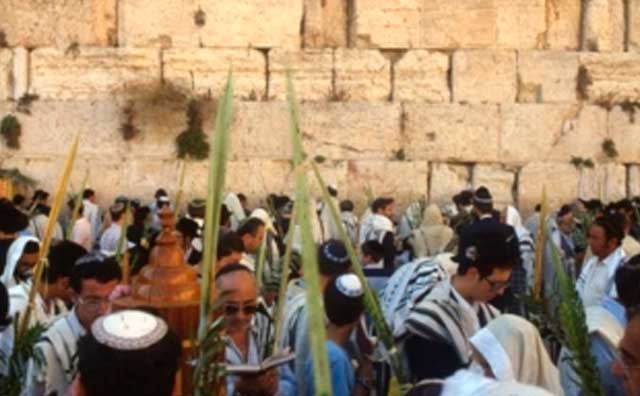What is Sukkot festivity ?
Sukkot is a Jewish holiday that is celebrated during autumn, in Israel it is celebrated for 7 days and in the Jewish diaspora 8. It is a festival of biblical origin that recalls the incidents of the Jewish people in the desert way to Eretz Israel. It also has an agricultural meaning, since it recalls when the Hebrew people gathered the harvest and prepared the fields for the future winter, reason why it is feast of agricultural thanksgiving, reason why often it is referred to as “the festival Of the harvest “or” the party of the cabins “.
During the festival, the Jews eat and sleep in the sukkah, which is a non-permanent outdoor hut, which intends to recall that time when the children of Israel wandered in the wilderness. The Sukkah represents the temporary refuge that the Israelites lived during those forty years.
Much of the ritual and the party revolves around rejoicing and thanking God for the harvest and for all the good that gives us.
Traditions of Sukkot
It is a special mitzvah to rejoice in Sukkot. For this reason, the middle days of Sukkot are characterized by celebrations called Simchat Beit HaShoeva, commemorating the water libations that were offered in the Temple during Sukkot.
The festival of Sukkot is directly related to the “water”, since it is the day of the universal judgment regarding the blessings of rain and irrigation for the coming year.
Sukkot is also a time of universal blessing for all peoples – symbolized by the 70 additional offerings that were offered in the Temple during the festival, which corresponded to the 70 nations of the world.
The Book of Ecclesiastes, written by King Solomon, is read on Shabbat during Sukkot. The theme of Ecclesiastes is the vain persecution of worldly pleasures as opposed to the eternal spiritual quest. In fact, the fragile construction of the Sukkah reminds us that material possessions are transitory.
The seventh day of Sukkot is called Hoshaná Rabá, which is characterized by the procession of the seven circuits around the Bimá, with the Four Species in the hand. The procession culminates with the pounding of the willow branch on the floor. Hosanna Rabba is known as the day of the final seal of judgment that began on Rosh Hashanah. In Hoshana Rabba, some have a habit of reading the Book of Deuteronomy and staying awake all night studying Torah.
The four species of Sukkot
- The etrog is similar (not identical) to a lemon
- The lulav is a branch of date palm
- El Hadás is a type of myrtle
- The aravá is a type of willow very leafy

